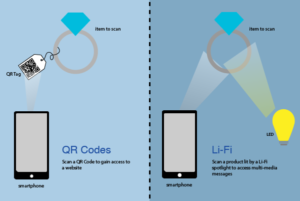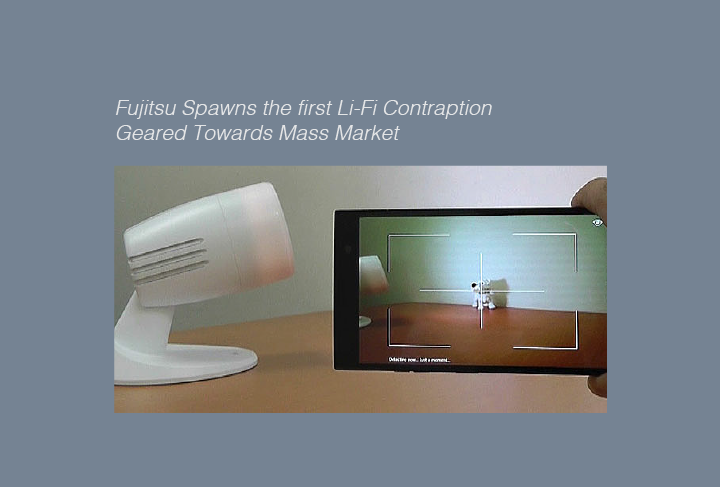QR codes are highly functional bar codes that have proved to be a slippery form of advertisement for marketers. QR codes can take users directly to a website, verify the legitimacy of a degree, or if put on a resume, redirect an employer to a candidate’s website with a simple scan. Despite their advantages however, QR codes have failed to percolate into the everyday lives of internet users.
But Fujitsu Laboratories have been researching a more accessible alternative—Li-Fi spotlights that perform the same function as QR codes. Li-fi is a relatively new connection method pioneered by Researcher Harald Haas from the University of Edinburgh that utilizes LED lights to connect users to the internet. For more in-depth information about how Li-Fi works, click here and here.
This short-distance alternative to Wi-Fi makes it possible to stream the internet as long as receiving devices face no physical obstructions to a light source that transmits Li-Fi. Fujitsu Laboratories have taken Li-Fi’s utility one step further and developed Li-Fi spotlights that can embed identification data on products that stores choose to display. Similar to how a QR code would function, shoppers can use their mobile phones to decode the information transmitted by Li-Fi spotlights and gain access to more information about a product.
 Fujitsu shows optimism about the utilitarian value of these new Li-Fi spotlights or “Li-Fi hotspots” and plans to incorporate them in places such as museums, art galleries, or tourist sites—places that rely on multi-media messages to enrich a visitor’s experience.
Fujitsu shows optimism about the utilitarian value of these new Li-Fi spotlights or “Li-Fi hotspots” and plans to incorporate them in places such as museums, art galleries, or tourist sites—places that rely on multi-media messages to enrich a visitor’s experience.
Imagine being able to walk around a world illuminated by Li-Fi that embeds the physical world with virtual multi-media messages. This new technology could possibly open the door to a digital real estate enhanced by augmented reality.
Augmented reality is the next untapped territory that marketers seek to conquer. In fact, recent developments in augmented reality make the Oculus Rift seem counterproductive because augmented reality embeds digital elements upon actual existing spaces, as opposed to virtual ones, to add value to society.
But Li-Fi doesn’t come without its limitations. Unlike QR codes, Li-Fi is useless for paper documentation. The success of future Li-Fi contraptions will depend on how seamlessly the technology can be integrated into a user’s experience of the internet.
Do you think Li-Fi spotlights is the answer to the gap that QR codes failed to fill? Or should the new technology be considered in an entirely new category?
Let us know what you think! Leave us a comment below.
Don’t forget to follow us on Facebook and Twitter for the latest news on tech trends and the Telco industry.


